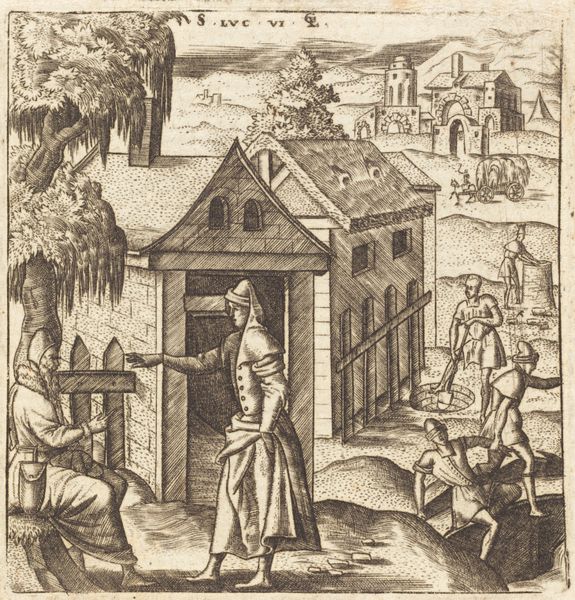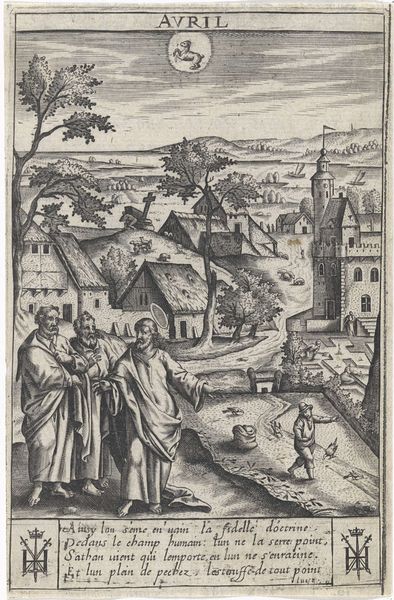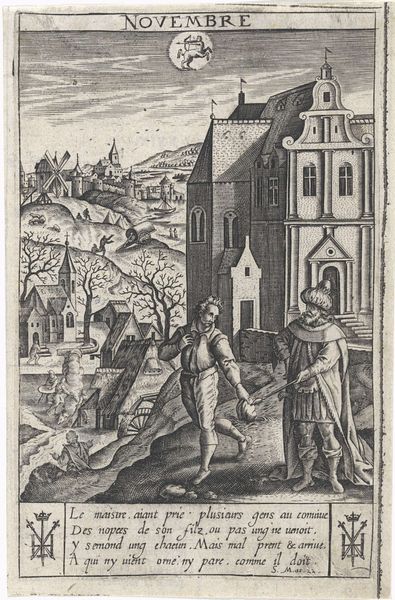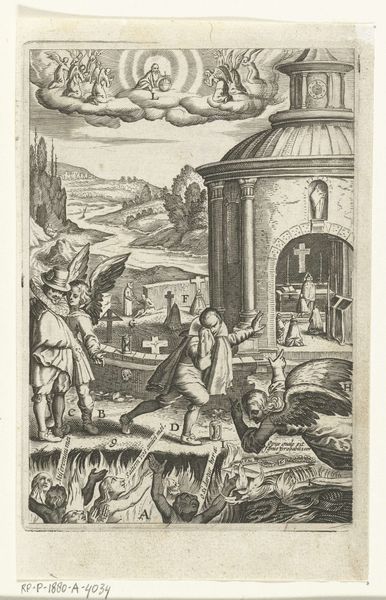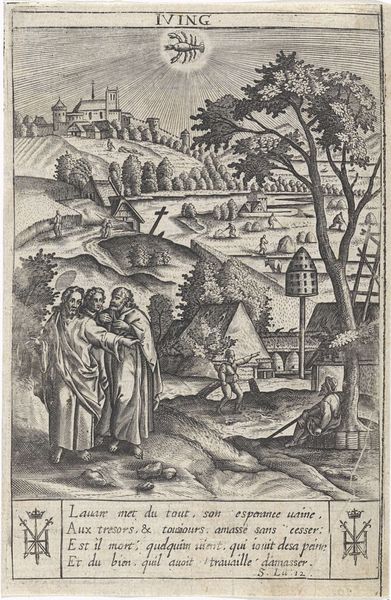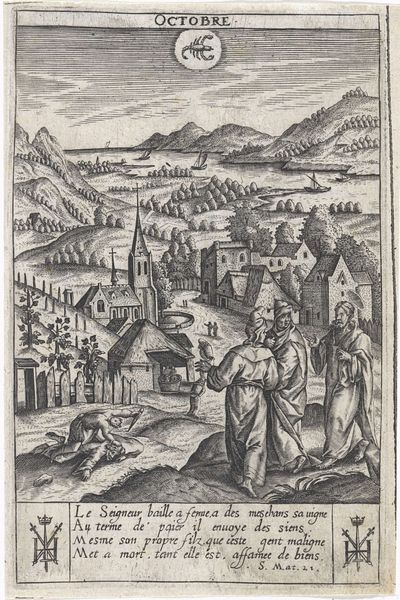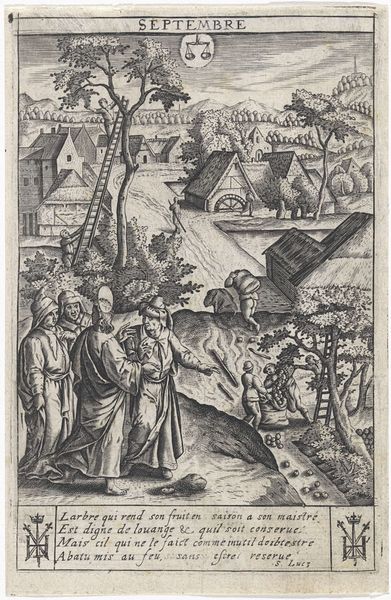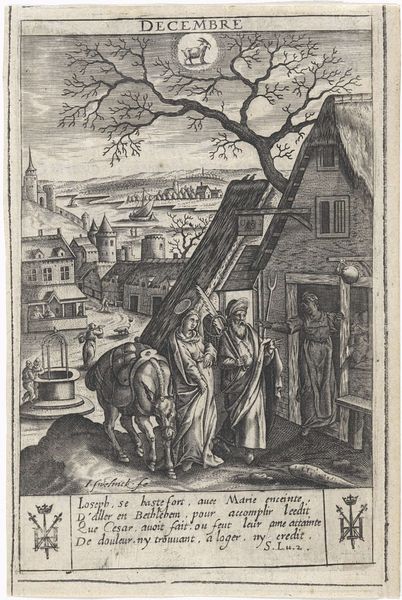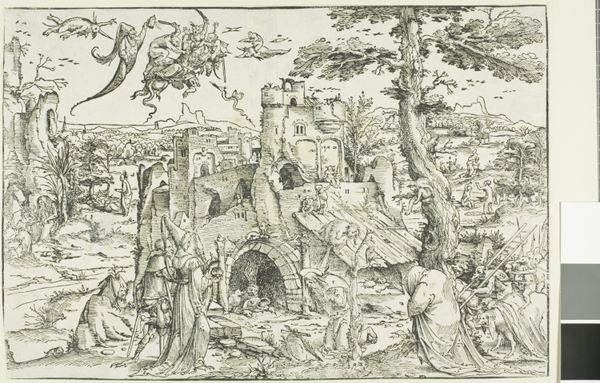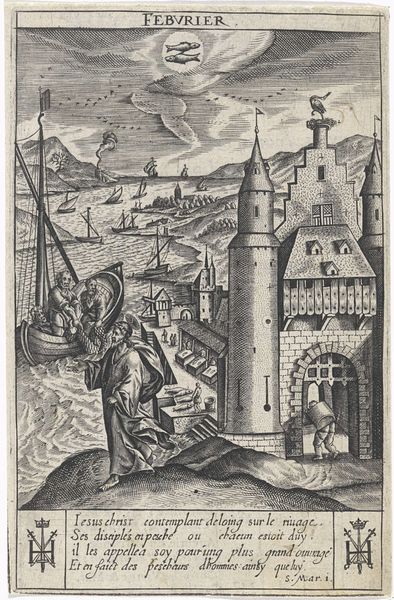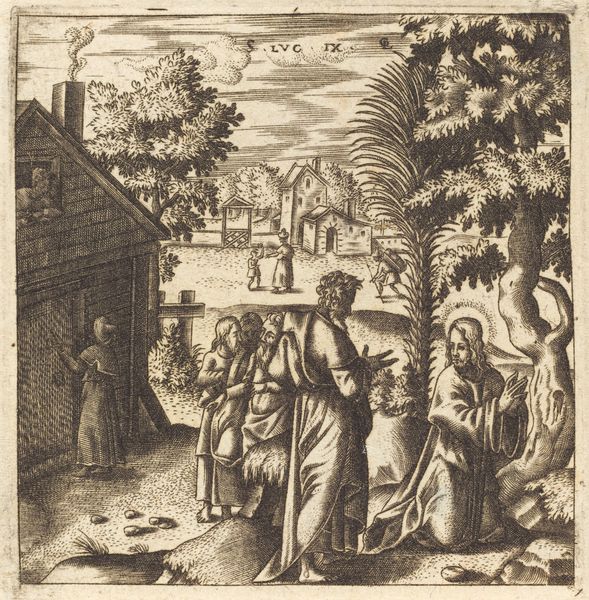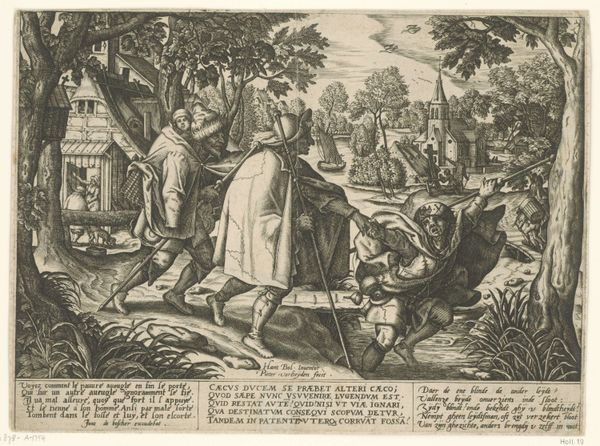
print, engraving
#
narrative-art
# print
#
landscape
#
figuration
#
genre-painting
#
northern-renaissance
#
engraving
Dimensions: height 141 mm, width 93 mm
Copyright: Rijks Museum: Open Domain
Curator: I'd like to introduce "Juli," an engraving dating from between 1624 and 1645, attributed to Jan Gerritsz Swelinck. It's a fascinating piece, brimming with detail. Editor: My initial impression is the starkness. The sharp lines and contrasts in this engraving create such a tangible sense of labor and rural life. There is a sort of beauty to its roughness, almost a poetic sense to the daily grind, if you will. Curator: I find it so interesting how this print encapsulates so much about Northern Renaissance social dynamics. Look at the central figure, presumably the good shepherd from the biblical reference, compared to the laborers around him. The tension there, with considerations of class and labor, speaks volumes. Editor: Precisely. Note the meticulous rendering of the roofers repairing a thatched roof, a skill and the hard work undervalued in this print. The means of creating this landscape and its setting have been achieved, yet hidden, in the foreground by the artist's decision to bring the religious aspect front and center. This decision can make for complex labor politics in an artwork. Curator: The print, moreover, shows the pervasive influence of genre painting on landscape art. The inclusion of narrative elements, like the shepherd tending his flock against the backdrop of village life, turns the natural landscape into a stage for human action. But how does this emphasis challenge or uphold existing structures? Is it just a depiction or an affirmation of a very classist system? Editor: It does both. Swelinck shows how a landscape exists both as lived reality and a commodity for religious authority. It reminds me how artistic creations were intricately tied to economic and power relations. This engraving really forces you to ponder what labor goes into producing not only a scene but a viewpoint as well. Curator: Indeed, viewing the material conditions alongside the narrative content can give rise to uncomfortable considerations of how these visual imageries either reify or subtly resist exploitation of laborers. Editor: Analyzing "Juli" underscores that to grasp a work fully, one must really look beyond the frame to investigate how societal structures shaped the making of the work and vice versa. Curator: A final word, this piece really shows me how much historical awareness changes my view of everyday scenes, to consider broader sociopolitical meanings encoded within what at first look like scenes of mere bucolic tranquility.
Comments
No comments
Be the first to comment and join the conversation on the ultimate creative platform.
